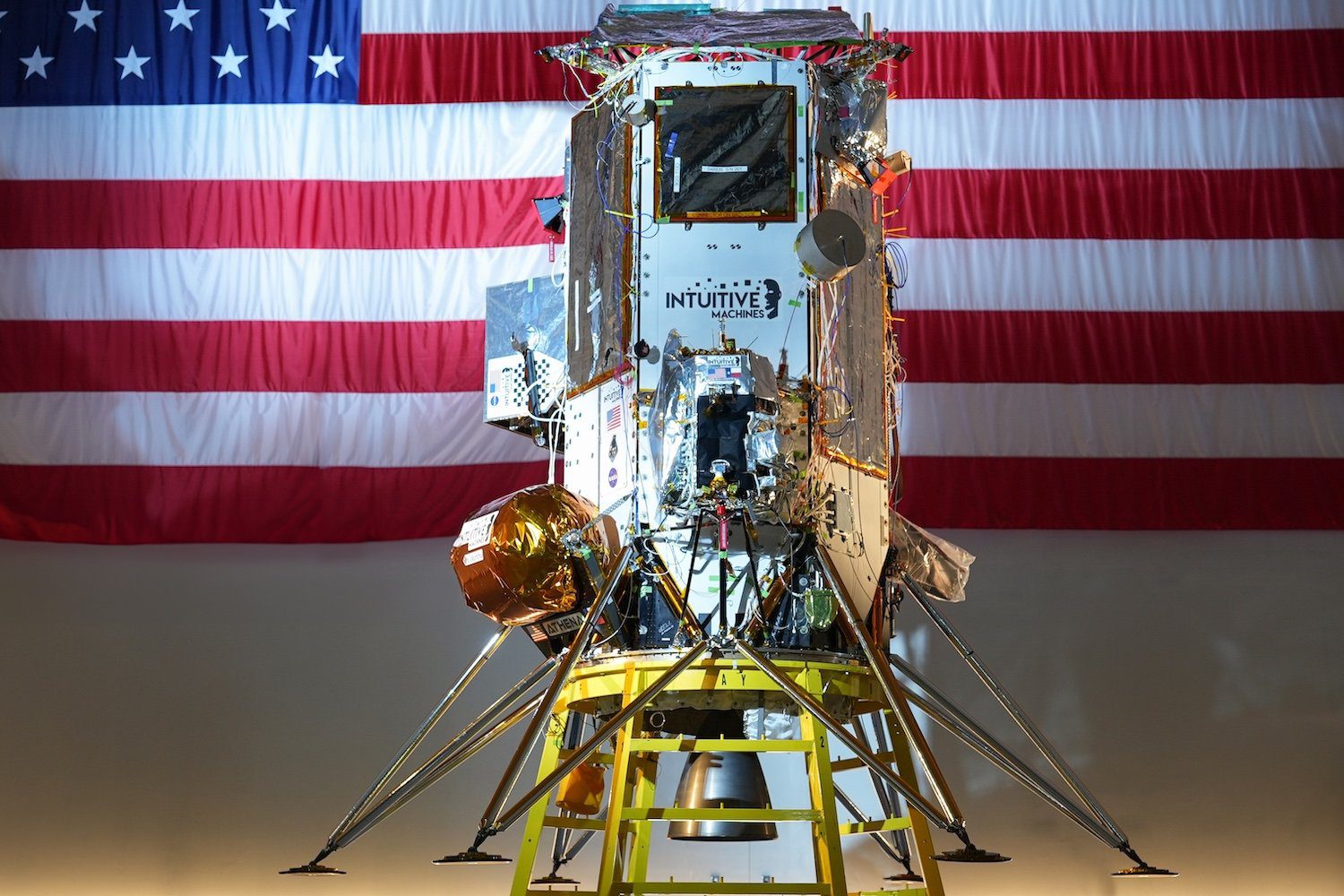
Introducing Grace, the innovative hopper robot engineered to explore the Moon’s shadowy craters, offering unprecedented views of the unlit regions surrounding the lunar south pole.
Houston-based startup Intuitive Machines is preparing for the launch of its second lunar mission, part of NASA’s Commercial Lunar Payload Services (CLPS) initiative. Their lunar lander, named Athena, will embark on its journey aboard a SpaceX Falcon 9 rocket during a four-day launch window starting on February 26. This mission will transport NASA’s scientific instruments, technology demonstrations, and various commercial payloads. Athena aims to land on Mons Mouton, a plateau near the Moon’s southern region. If successful, Athena will deploy its payload, which includes a Micro-Nova robot called Grace, designed to hop into a nearby crater and then return to the surface.
Named after Grace Hopper, a trailblazing mathematician and computer scientist known for promoting accessible programming, this robot embodies a similar mission: to make the Moon’s darkest corners accessible to all.
Unlike the renowned mathematician, Grace functions as a propulsive drone, capable of hopping across the lunar terrain. It is programmed to execute five hops, each varying in altitude. Grace will utilize its onboard thrusters to propel itself upward, reaching an impressive height of 330 feet (100 meters) on its third hop before descending into a permanently shadowed crater.
Grace is set to target Crater H, which is about 65 feet (20 meters) deep and located approximately 1,650 feet (500 meters) from Athena’s landing site. Trent Martin, senior vice president of space systems at Intuitive Machines, highlighted this during a recent press conference reported by Space.com. While exploring the crater, Grace will search for water and other resources, capturing images with its onboard cameras. The hopper will stay connected to Athena via Nokia’s Lunar Surface Communication System, one of the lander’s commercial payloads aimed at establishing the first 4G/LTE network on the Moon.
The hopper is designed to spend around 45 minutes on the crater’s floor before making its ascent back to the surface. “If you’re aiming to explore a deep crater, utilizing a drone is a smart approach,” Martin stated in the Space.com article.
Grace represents a groundbreaking technological demonstration as no hopping robot has ever ventured to the Moon. While Ingenuity, a reliable rotorcraft exploring Mars alongside the Perseverance rover, utilized short flights above the surface, Grace’s function as a hopping explorer is entirely unique. Additionally, China plans to launch its own mobile hopper as part of the Chang’e 7 mission, slated for a 2026 launch.
Intuitive Machines has previous lunar experience, having launched its first lander, Odysseus, in February 2024. Although Odysseus successfully touched down on the Moon, its landing was less than ideal — one of its legs may have snagged during descent, causing it to topple onto its side, ending up sideways on a rock. Both landers are named from Greek mythology, with Athena serving as Odysseus’ divine protector. Inspired by this connection, we hope the Athena lander will embody the wisdom and strength of its namesake goddess, successfully delivering Grace to the lunar surface.









